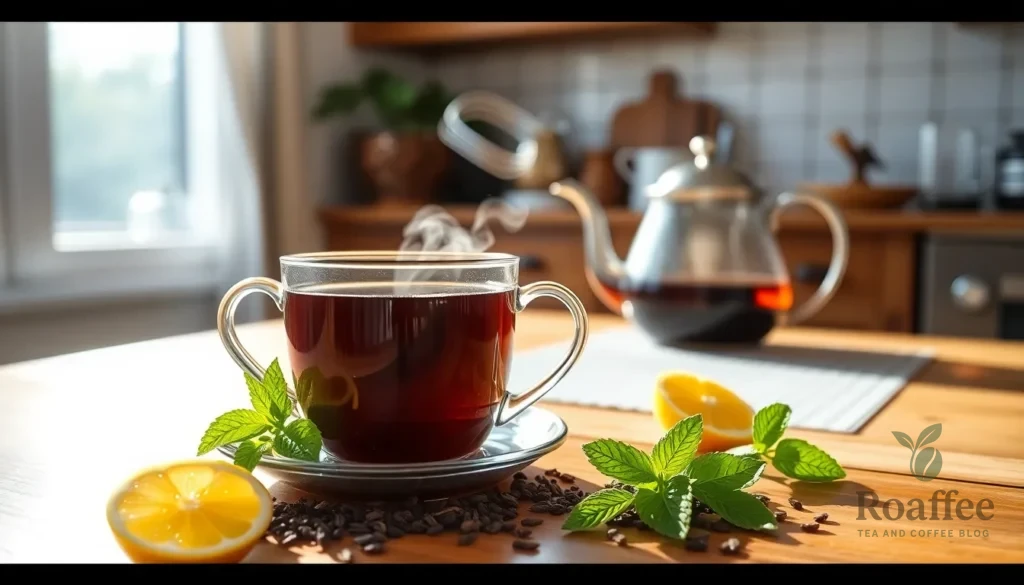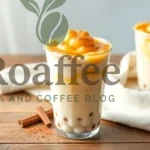Earl Grey tea has captivated tea lovers for centuries with its distinctive bergamot flavor and elegant aroma. This beloved blend combines black tea with the citrusy oil of bergamot oranges, creating a sophisticated drink that’s perfect for any time of day. Whether you’re hosting an afternoon tea party or simply craving a moment of tranquility, we’ll show you how to brew the perfect cup every time.
The secret to exceptional Earl Grey lies in understanding the delicate balance between tea strength and bergamot intensity. Many people struggle with bitter or weak results, but with our foolproof method, you’ll master the art of proper steeping. From water temperature to timing, we’ve perfected every detail to ensure your tea tastes like it came from a luxury hotel.
Ready to transform your daily tea ritual? Let’s jump into the simple steps that’ll have you brewing Earl Grey like a true connoisseur in just minutes.
What You’ll Need
Creating the perfect cup of Earl Grey starts with gathering the right ingredients and tools. We’ll walk you through everything necessary to brew this aromatic blend with precision and confidence.
Tea Options
Earl Grey loose leaf tea delivers the most authentic and flavorful experience. We recommend choosing high-quality loose leaf varieties that showcase the perfect balance between robust black tea and bergamot oil. Premium brands often use Ceylon or Assam black tea as their base which creates a strong foundation for the citrus notes.
Tea bags offer convenience without sacrificing too much quality. Look for pyramid-shaped tea bags that allow leaves more room to expand during steeping. Many reputable tea companies now offer Earl Grey in sachets that contain the same quality leaves as their loose leaf versions.
Organic Earl Grey provides an excellent choice for those who prefer pesticide-free options. These blends typically use naturally extracted bergamot oil rather than synthetic flavoring. The organic certification ensures both the black tea leaves and bergamot meet strict quality standards.
Equipment
A teapot or infuser allows loose leaf tea to steep properly and develop full flavor. Glass or ceramic teapots work best since they don’t retain flavors from previous brews. We suggest choosing a teapot that holds at least 16 ounces to accommodate multiple servings.
A tea strainer becomes essential when using loose leaf tea without a built-in infuser. Fine mesh strainers catch even the smallest tea particles and prevent them from ending up in your cup. Stainless steel versions last longer and clean more easily than plastic alternatives.
A kettle with temperature control helps achieve the precise water temperature needed for Earl Grey. Electric kettles with variable settings eliminate guesswork and ensure consistent results. Standard stovetop kettles work well when paired with a thermometer to monitor water temperature.
A timer prevents over-steeping which can result in bitter tea. Digital timers provide accuracy down to the second. Most smartphones have built-in timer functions that work perfectly for tea brewing.
Quality water makes a important difference in the final taste. Filtered water removes chlorine and other chemicals that can interfere with the delicate bergamot flavors. Spring water serves as an excellent alternative when filtered water isn’t available.
Ingredients
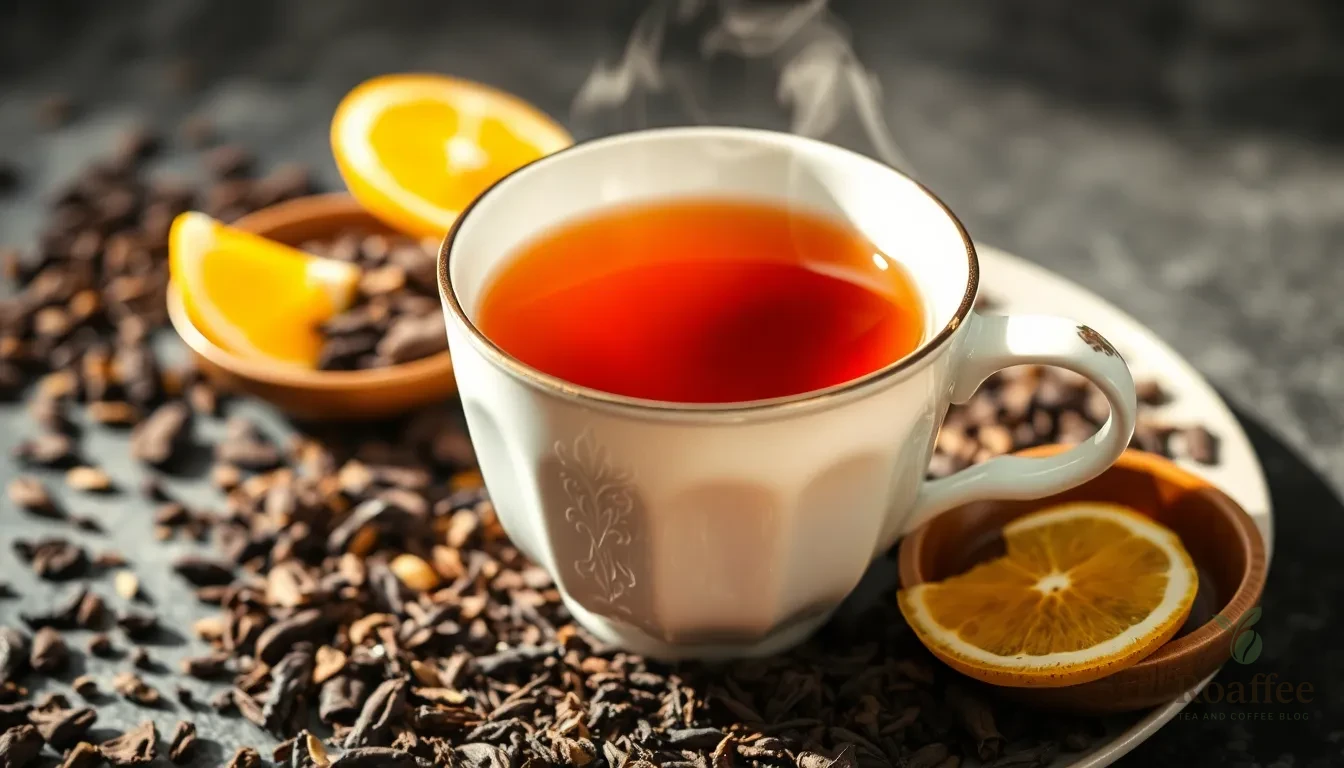
Creating the perfect cup of Earl Grey tea requires just a few essential ingredients that work together to deliver that signature bergamot flavor we all love. Each component plays a crucial role in achieving the ideal balance between the robust black tea base and the citrusy bergamot oil.
Essential Ingredients
- 1 to 2 Earl Grey tea bags (or 1-2 teaspoons loose leaf Earl Grey tea)
- 8 ounces (1 cup) boiling water at approximately 208°F/98°C
- Optional additions:
- Milk
- Sugar
- Honey
- Lemon wedges
- Fresh mint leaves
Quality Considerations
We recommend selecting premium loose leaf Earl Grey tea for the most authentic flavor experience. Ceylon or Assam black tea varieties provide the strongest foundation for bergamot oil infusion. Pyramid-shaped tea bags offer convenience while maintaining quality if loose leaf isn’t available.
Filtered or spring water enhances the delicate bergamot notes significantly better than tap water. The mineral content in quality water allows the bergamot oil to express its full aromatic potential without interference from chlorine or other additives.
Preparation Notes
Water temperature remains critical for proper extraction. Boiling water should cool slightly to 208°F before pouring over the tea. This temperature ensures optimal bergamot oil release without scorching the delicate black tea leaves.
Steeping time directly impacts flavor intensity. Three to five minutes provides the perfect balance between strength and smoothness. Longer steeping times can result in bitter compounds overpowering the bergamot’s citrusy brightness.
Instructions
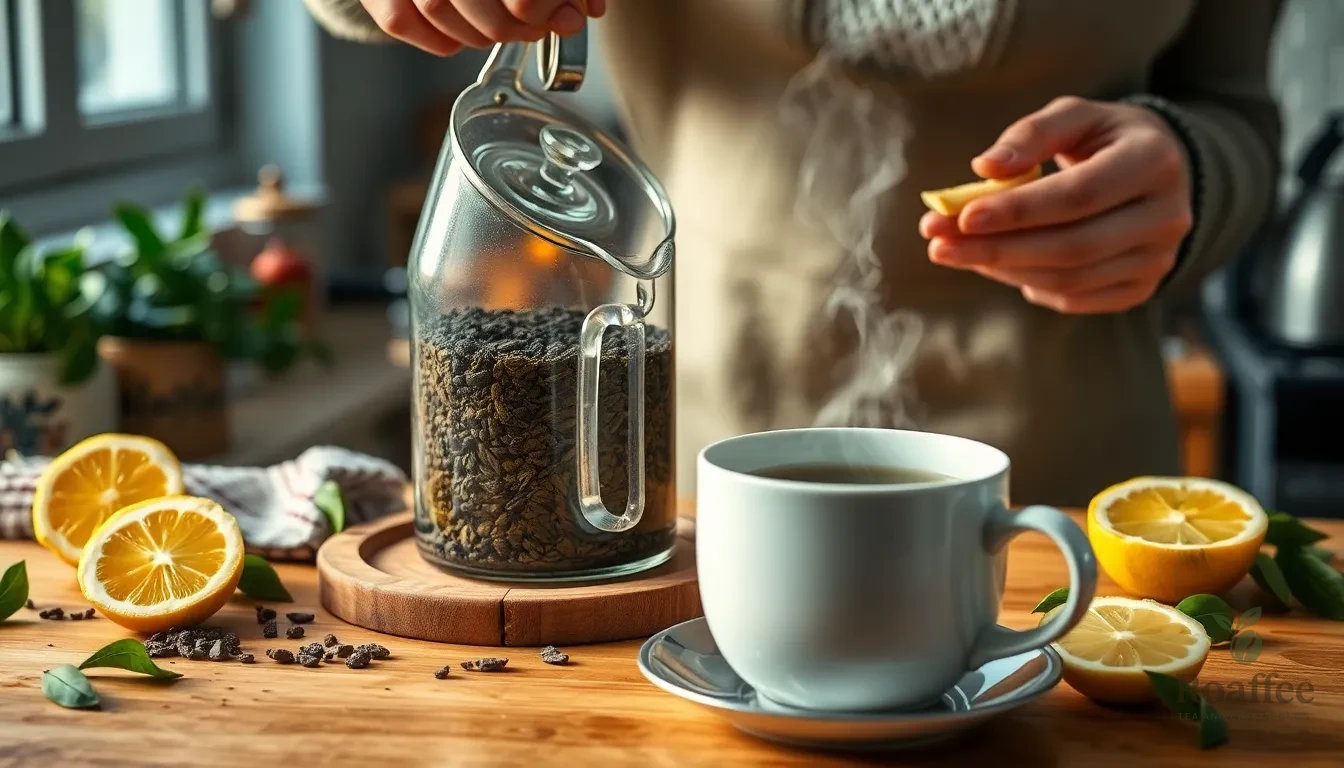
Now that we have our ingredients and tools ready, let’s walk through the step-by-step process to brew the perfect cup of Earl Grey tea. Following these precise techniques will ensure optimal flavor extraction and aroma development.
Prep the Water
We begin by using fresh, cold, filtered water for the best possible flavor. Heat the water to about 98°C (just below boiling point). If your kettle lacks temperature control, bring water to a full boil then let it cool slightly before brewing.
We recommend warming your teapot or cup by swirling some hot water in it and then discarding the water. This step maintains optimal steeping temperature and prevents heat loss during brewing. Quality water enhances the delicate bergamot flavors that make Earl Grey distinctive.
Measure the Tea
We use one teaspoon of loose leaf Earl Grey tea per 6-ounce cup (about 180 ml) for the perfect strength. Adjust according to cup size and personal preference for stronger or milder tea. For a larger mug or more robust flavor, we increase to two teaspoons.
Premium loose leaf tea provides the most authentic flavor compared to standard tea bags. The proper tea-to-water ratio ensures balanced extraction without overwhelming the bergamot’s citrusy brightness.
Steep the Tea
We pour the hot water over the tea leaves, ensuring they are fully submerged for even extraction. Steep for 3 to 5 minutes depending on desired strength. Steeping shorter gives a lighter flavor profile, while closer to 5 minutes enhances the citrus aroma from the bergamot.
We avoid over-steeping to prevent bitterness that can overshadow the delicate bergamot notes. The ideal steeping time creates perfect balance between the black tea’s strength and the bergamot’s aromatic intensity.
Strain and Serve
We remove the tea leaves by straining or lifting out the infuser to stop the brewing process. Serve the tea plain or customize it according to preference. Traditionally, Earl Grey can be enjoyed with a slice of lemon, sugar, or milk.
Milk mellows the flavor and adds creaminess, while lemon brightens the overall taste profile. For a London Fog variation, we add frothed milk and a touch of vanilla extract after steeping for a rich, aromatic experience that highlights Earl Grey’s distinctive black tea base and bergamot citrus notes.
Brewing Variations
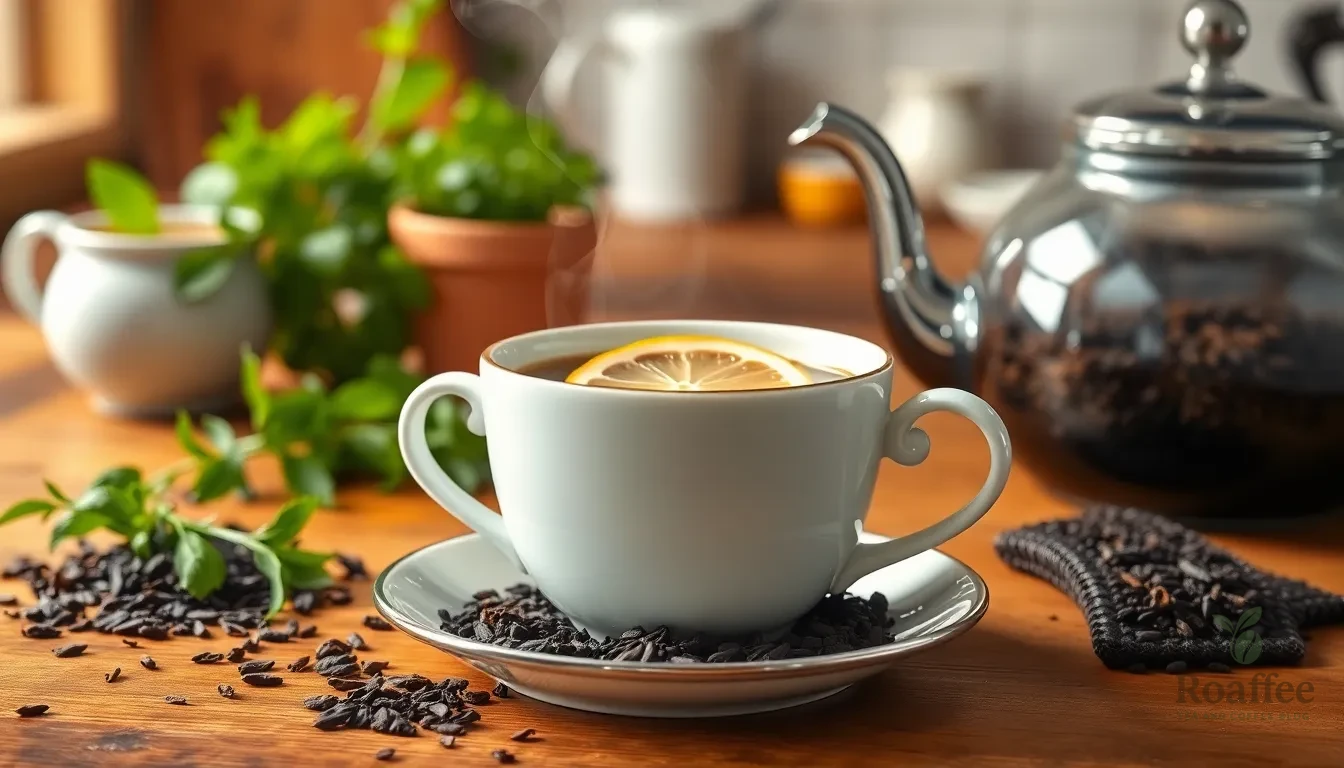
We can transform our Earl Grey experience by exploring different brewing methods that highlight the tea’s versatility. Each variation offers unique flavor profiles and serving options to suit different preferences and occasions.
Hot Earl Grey Tea
We achieve the perfect hot Earl Grey by heating water to 208°F, which extracts the optimal balance of bergamot oils and black tea tannins. Our process begins with warming the teapot or cup by swirling hot water inside and discarding it to ensure even steeping temperature throughout the brewing process.
We measure 1 teaspoon of loose leaf tea per 6-ounce cup or 1.5 teaspoons per 8-ounce cup for ideal strength. The hot water should be poured directly over the tea leaves to create proper agitation for full flavor extraction. We steep for 3 to 5 minutes, with longer steeping times up to 5 minutes recommended for maximum flavor development.
We serve hot Earl Grey traditionally with a slice of lemon to enhance the citrus notes already present in the bergamot oil. Sugar or milk can be added according to personal preference, though we recommend tasting the tea plain first to appreciate its natural complexity.
Iced Earl Grey Tea
We create refreshing iced Earl Grey using cold brewing methods that produce a smoother, less bitter flavor profile. Our cold brew technique requires 1 teaspoon of loose leaf tea per 1 cup of cold water for the proper concentration.
We combine tea and water in a jar or French press, then refrigerate for at least 8 to 12 hours to allow gentle extraction of flavors. This extended steeping time compensates for the lower water temperature and creates a naturally sweet, mellow brew.
We strain the tea leaves completely before serving over ice to prevent continued steeping and bitterness. Lemon slices or sweetener can be added to taste, though the cold brewing process often eliminates the need for additional sweetening.
Earl Grey Latte
We prepare Earl Grey lattes by first creating a concentrated cold brew tea base that steeps overnight for maximum flavor intensity. This concentrate forms the foundation for a creamy, café-style beverage that balances tea and milk perfectly.
We fill a glass with ice and pour the tea concentrate to about the halfway point, leaving room for milk additions. Unsweetened almond milk or soy milk works best as these plant-based options complement rather than overpower the delicate bergamot flavors.
We sweeten lightly with maple syrup or honey, which harmonizes beautifully with the tea’s natural citrus notes. Our testing shows that cow’s milk or coconut milk should be avoided in iced Earl Grey lattes as they create flavor conflicts that diminish the tea’s distinctive character.
Tips for the Perfect Cup
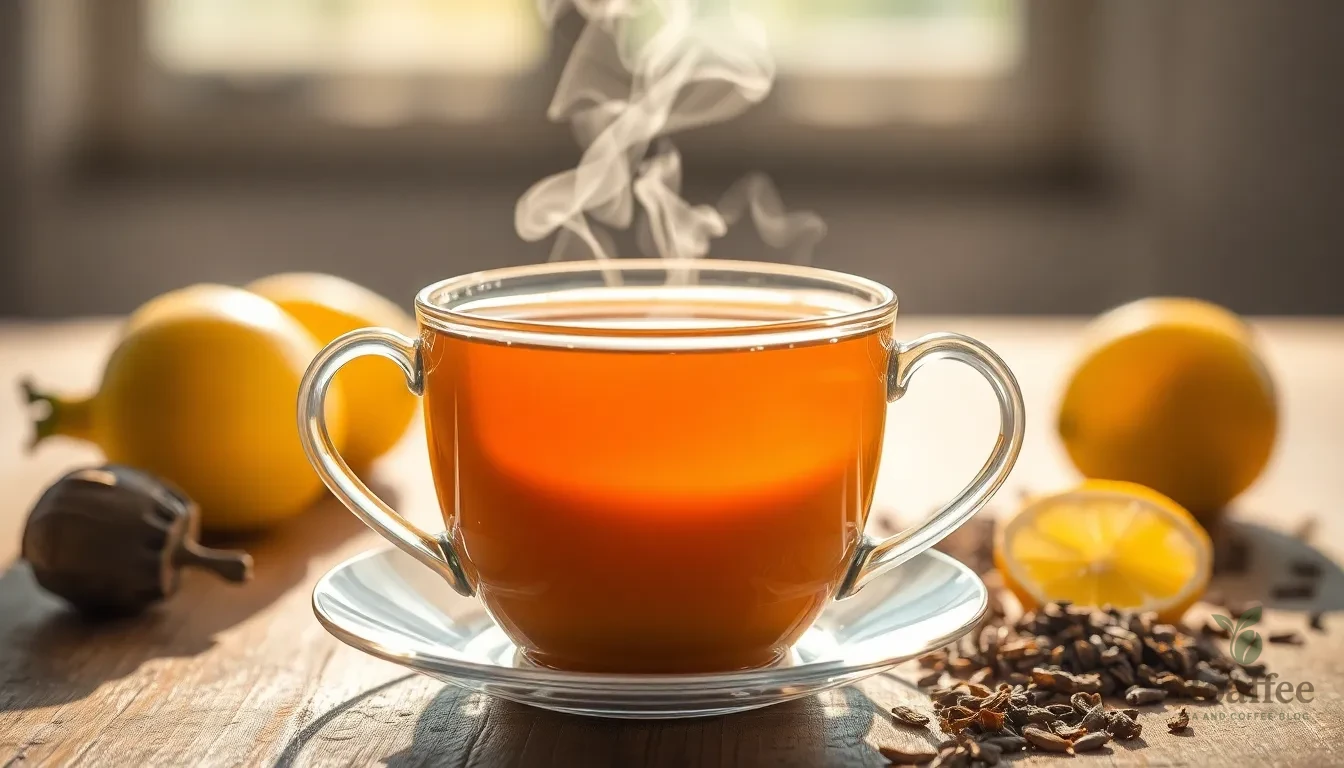
Mastering these essential techniques will transform your Earl Grey experience from ordinary to extraordinary. We’ve gathered the most effective methods to ensure every cup delivers the perfect balance of bold black tea and aromatic bergamot.
Water Temperature Guidelines
Water temperature plays a crucial role in extracting the optimal flavors from your Earl Grey tea. We recommend heating your water to 96°C (just off the boil) for the best results. This temperature allows the black tea to release its full-bodied character while preserving the delicate bergamot oil’s citrusy notes.
Avoid using water that’s too hot, as temperatures above 96°C can burn the tea leaves and create unwanted bitterness. Conversely, water that’s too cool won’t extract the full flavor profile from your Earl Grey blend. Using fresh, cold, filtered water ensures a clean taste foundation without any interference from chlorine or other impurities commonly found in tap water.
Steeping Time Recommendations
The steeping duration directly impacts your tea’s strength and flavor balance. We suggest steeping Earl Grey for 3 to 5 minutes depending on your taste preferences. A shorter steeping time of 3 minutes produces a lighter, more delicate brew that highlights the bergamot’s floral qualities.
For those who prefer a stronger cup, extend the steeping time to 5 minutes to achieve a robust flavor with pronounced black tea characteristics. Never steep beyond 5 minutes, as this can lead to excessive tannin extraction and overwhelming bitterness that masks the bergamot’s bright citrus notes. Always cover your cup or teapot while steeping to trap heat and preserve the essential oils’ aromatic compounds.
Storage Tips
Proper storage maintains your Earl Grey’s freshness and prevents flavor deterioration over time. We recommend storing loose leaf Earl Grey tea in an airtight container away from light, heat, and moisture to preserve its distinctive aroma and taste profile.
Keep your tea bags sealed in their original packaging or transfer them to a sealed container to maintain optimal flavor integrity. Store your Earl Grey in a cool, dry pantry or cupboard, avoiding areas near stoves, windows, or other heat sources that can degrade the bergamot oil’s potency. Following these storage guidelines ensures your Earl Grey retains its signature citrusy brightness for months to come.
Serving Suggestions

Earl Grey tea offers remarkable versatility in serving options that can transform your tea experience. We recommend starting with the traditional British approach by serving Earl Grey plain to fully appreciate its distinctive bergamot flavor and aromatic qualities.
Traditional Hot Service
Pour freshly brewed Earl Grey into warmed teacups and serve immediately while the temperature reaches optimal drinking levels. Add a slice of lemon to enhance the citrus notes already present in the bergamot oil. For those who prefer a richer experience, incorporate a splash of whole milk or cream after steeping to create a smooth, luxurious texture.
London Fog Variation
Transform your Earl Grey into a popular café-style beverage by preparing a London Fog. Warm 4 ounces of milk using your preferred method and add maple syrup or honey to taste. Mix the sweetened milk into your freshly brewed Earl Grey and finish with a few drops of vanilla extract for a creamy, aromatic drink that balances the tea’s boldness with comforting sweetness.
Spiced Earl Grey Chai
Create an innovative fusion by brewing Earl Grey with warming spices like cardamom, cinnamon, fennel, and ginger. Add your preferred sweetener during the brewing process and top with frothed milk and a dash of vanilla extract. This variation combines the familiar bergamot notes with traditional chai spices for a unique flavor profile.
Iced Earl Grey Options
Serve chilled Earl Grey over ice for refreshing summer enjoyment. Prepare a concentrated brew using double the tea quantity, then pour over ice to prevent dilution. Garnish with fresh mint leaves and lemon wedges for an invigorating cold beverage that maintains the tea’s signature flavor intensity.
Creative Culinary Applications
Extend Earl Grey beyond traditional tea service by infusing cream with tea leaves for dessert applications or creating Earl Grey syrups that enhance flavor in various culinary creations. These applications showcase the tea’s versatility in both beverage and food preparations.
Conclusion
Mastering the art of Earl Grey brewing opens up a industry of sophisticated tea experiences right in your kitchen. We’ve equipped you with the knowledge to transform simple ingredients into an extraordinary cup that rivals any tea house.
The beauty of Earl Grey lies in its adaptability – whether you prefer it traditional hot or as a refreshing iced variation there’s a perfect method for every palate. Remember that quality ingredients and proper technique make all the difference in achieving that ideal balance.
Now it’s time to put these techniques into practice. Start with the basic hot brew method and gradually experiment with different variations and serving suggestions. Your perfect cup of Earl Grey awaits and with these proven methods you’ll be brewing like a true connoisseur in no time.
Frequently Asked Questions
What is Earl Grey tea and what makes it unique?
Earl Grey is a flavored black tea infused with bergamot oil, which gives it a distinctive citrusy aroma and taste. This centuries-old blend combines the robust flavor of black tea with the bright, floral notes of bergamot, creating a sophisticated and aromatic beverage that has remained popular among tea enthusiasts worldwide.
What’s the best type of Earl Grey tea to use?
High-quality loose leaf Earl Grey tea provides the most authentic flavor, particularly varieties based on Ceylon or Assam black tea. For convenience, pyramid-shaped tea bags work well. Organic options are recommended for those seeking pesticide-free choices, as they maintain the delicate bergamot flavors without chemical interference.
What water temperature should I use for brewing Earl Grey?
Heat water to approximately 208°F (98°C), which is just below boiling point. This temperature is crucial for optimal flavor extraction while preventing bitterness. Water that’s too hot can overextract tannins and mask the delicate bergamot notes, while cooler water won’t properly extract the tea’s full flavor profile.
How long should I steep Earl Grey tea?
Steep Earl Grey for 3 to 5 minutes for the perfect balance of strength and smoothness. Shorter steeping times (3 minutes) create lighter brews, while longer times (5 minutes) produce stronger flavors. Steeping beyond 5 minutes can result in bitterness that overshadows the bergamot’s citrusy brightness.
What’s the proper tea-to-water ratio for Earl Grey?
Use one teaspoon of loose leaf Earl Grey tea per 6-ounce cup of water, or 1-2 tea bags for 8 ounces of water. This ratio ensures proper flavor extraction without creating an overly strong or weak brew. Adjust slightly based on personal preference for stronger or milder tea.
Can I make iced Earl Grey tea?
Yes! For iced Earl Grey, use the cold brewing method for a smoother taste. Brew a concentrated version using double the amount of tea leaves, then pour over ice. You can also make Earl Grey lattes by combining concentrated cold brew with milk for a creamy, refreshing beverage.
What are the best additions to Earl Grey tea?
Earl Grey can be enjoyed plain to appreciate its bergamot flavor, or enhanced with lemon slices for extra citrus notes. Milk or cream adds richness, while honey or sugar provides sweetness. For a London Fog variation, add frothed milk and vanilla extract for a café-style experience.
How should I store Earl Grey tea?
Store loose leaf Earl Grey in airtight containers away from light, heat, and moisture to preserve freshness. Proper storage maintains the bergamot’s signature brightness and prevents the tea from absorbing other flavors. Quality storage can keep Earl Grey fresh for several months while maintaining its aromatic properties.
What equipment do I need to brew perfect Earl Grey?
Essential equipment includes a teapot or tea infuser, tea strainer, kettle with temperature control, timer, and quality filtered or spring water. A warmed teapot helps maintain optimal steeping temperature, while filtered water enhances the delicate bergamot flavors without interference from chlorine or other chemicals.
Can I use Earl Grey tea in cooking and baking?
Absolutely! Earl Grey’s versatility extends beyond traditional tea service. You can infuse cream with tea leaves for desserts, create Earl Grey syrups for cocktails or baking, or make spiced Earl Grey chai by adding warming spices. These creative applications showcase the tea’s unique bergamot flavor in various culinary contexts.

